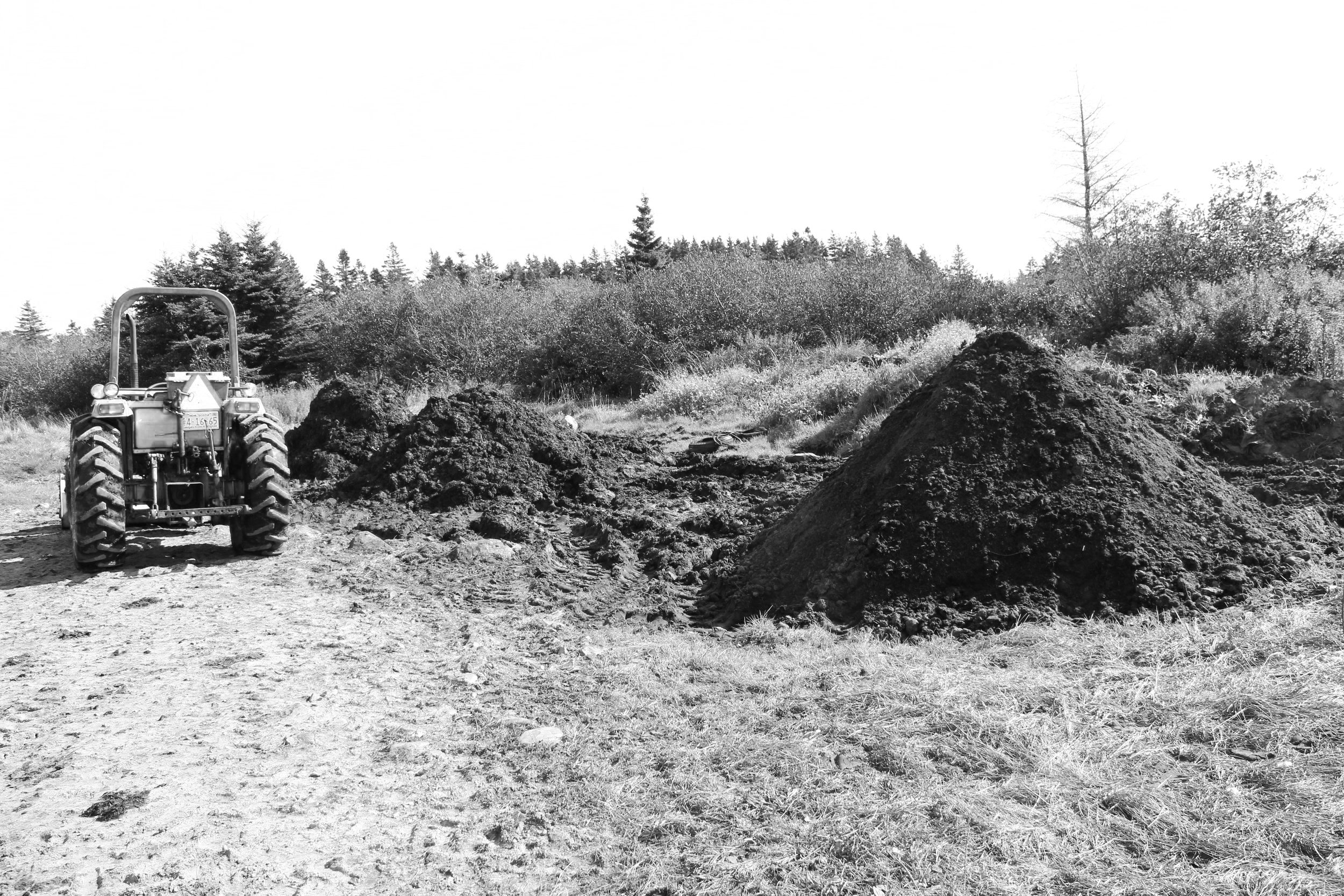In the late fall and winter, Bear Cove Resources collects a regulated quantity of stranded seaweed. Throughout the rest of the year, we monitor and control the decomposition of the harvested marine vegetation. The resulting product is Storm-Cast fertilizer and soil amendment.

Oral history indicates the collection of seaweeds for agricultural use was widespread as late as the mid-twentieth century. But, post-war industrialization and the availability of manure and mass-produced Nitrogen (N), Phosphorus (P), and Potassium (K) fertilizers severely impacted this tradition. Protection of coastal habitat has all-but eliminated collection of wrack (seaweeds stranded along the shore) for personal agricultural use.
COLLECT
Bear Cove Resources has a license to collect wrack from October 1st to March 31st, along a 10 km stretch of the eastern headlands of Liverpool Bay. This high wave energy shoreline is bare rock, boulder, and cobblestone beaches with a few sandy coves where seaweeds wash ashore after storm events. The varieties of seaweeds and the quantity of sand and shell fragments mixed into the wrack material will vary with beach location and with the intensity and wind direction of the contributing storm.
The spring cut-off avoids collection from interfering with shorebird nesting. Of particular concern is the shy and endangered Piping Plover, which is native to this region. Wrack and insects associated with its decomposition, and leachate, which runs back into the sea, are relevant food sources to various land and sea plants and animals. Bear Cove Resources removes only a small portion of the wrack from a beach.
Originally, we collected using a farm tractor equipped with a front-end loader and custom forks in the bucket, and a tandem-axle dump trailer. Our method was a slightly scaled-up version of the traditional way of pitchforking the wrack into an ox or horse-drawn cart or pickup truck. Over many seasons, Kevin Dowling of Forest Products Plus had been collecting most of the wrack for BCR using a log hauler and crane picker. Much as he enjoyed all that fresh beach air Kevin has recently retired from collecting seaweed. We are grateful for his help over the years.
COMPOST
Twenty or more trailer loads are stacked into large windrows and covered with tarps to deter leaching, flies, and weeds. Even in February, with air temperatures of -20 C, the seaweed quickly heats up and begins composting. Over months, as ground and wind conditions permit, the piles are uncovered, turned using a tractor, and covered again. Wrack as-gathered has a low carbon-nitrogen ratio (around 20:1), resulting in rapid decomposition but a strong smell, especially during turning, as an ammonia-like odor is released. Nova Scotians residing along the exposed Atlantic coast will be familiar with the spring smell of wrack piles rotting along the shoreline. For this reason, turning happens during periods of offshore winds to avoid inconveniencing any neighbors living inland of the compost yard.
Bear Cove Resources is proud that after 29 years of operations, there is no evidence of a negative impact of our activities along the shoreline. And we have never had a complaint from our neighbors.
BAGGING & SELLING
When the collection season ends, the bagging season begins with the dump trailer’s conversion into a bagging hopper. The composted wrack is loaded and transported to the bagging facility. The compost is tilled, using an electric rototiller, which breaks up clumps and finds larger rocks, flotsam, and jetsam. Finally, we visually inspect the product as it funnels through a chute into a Storm-Cast bag.
